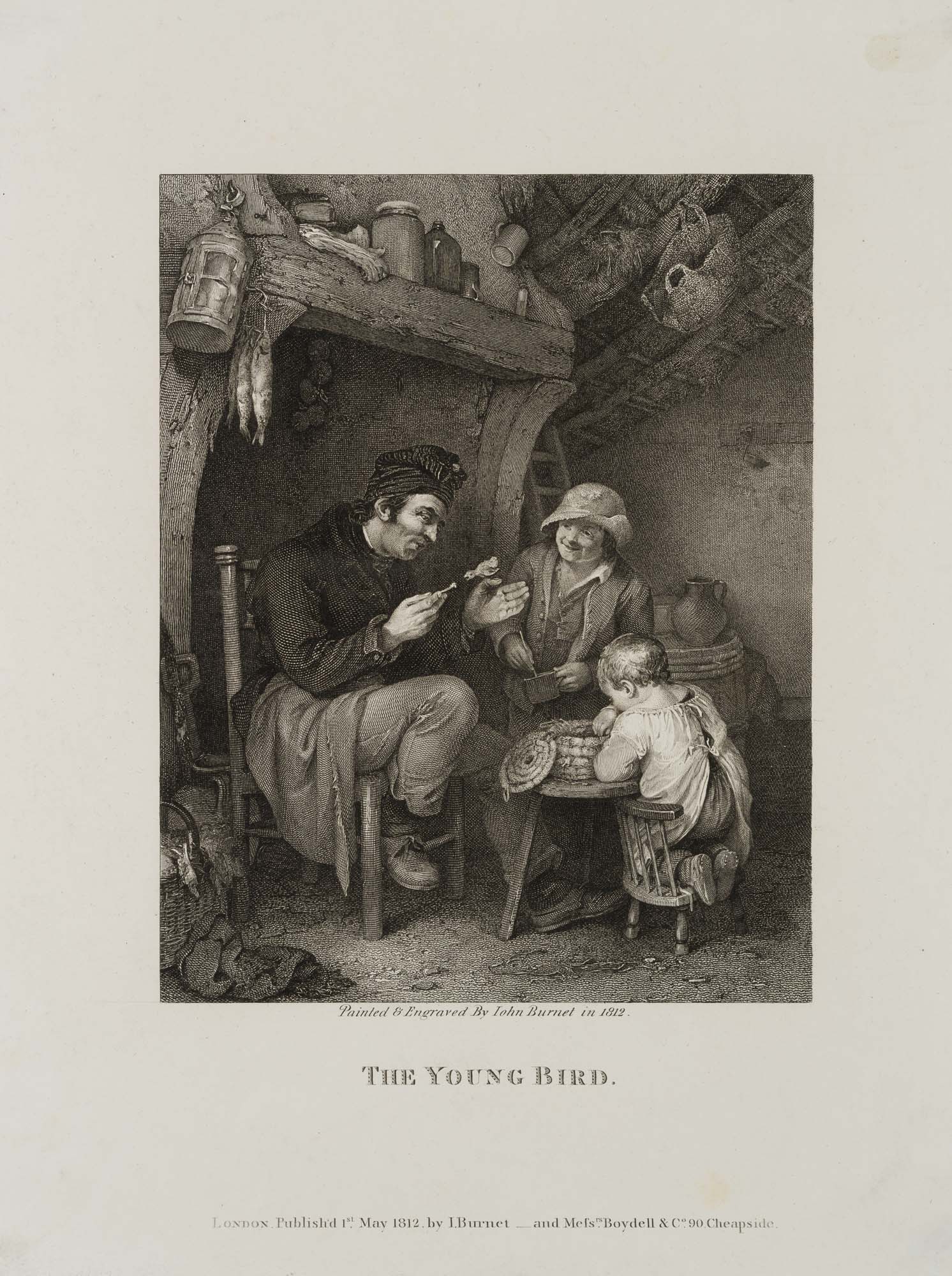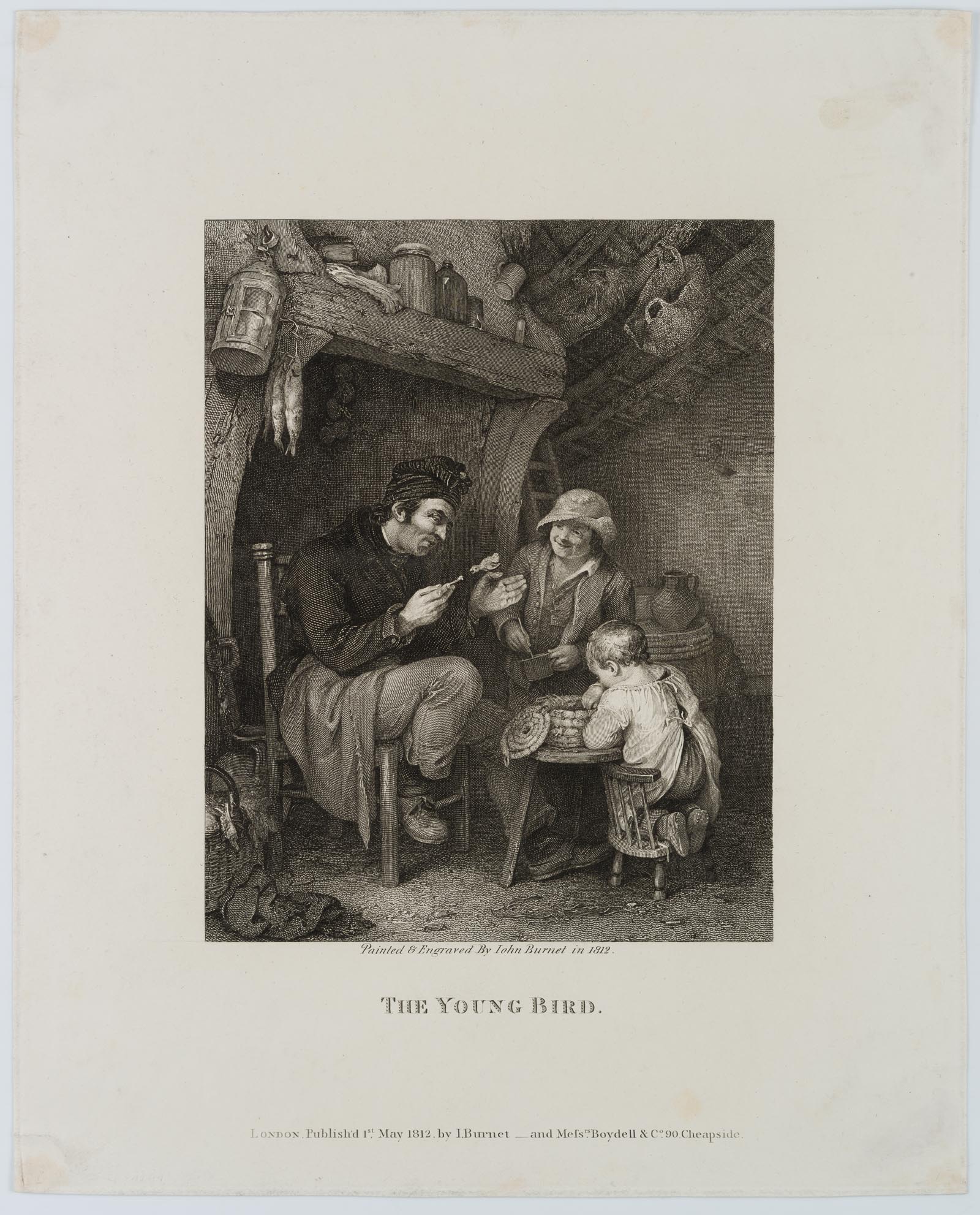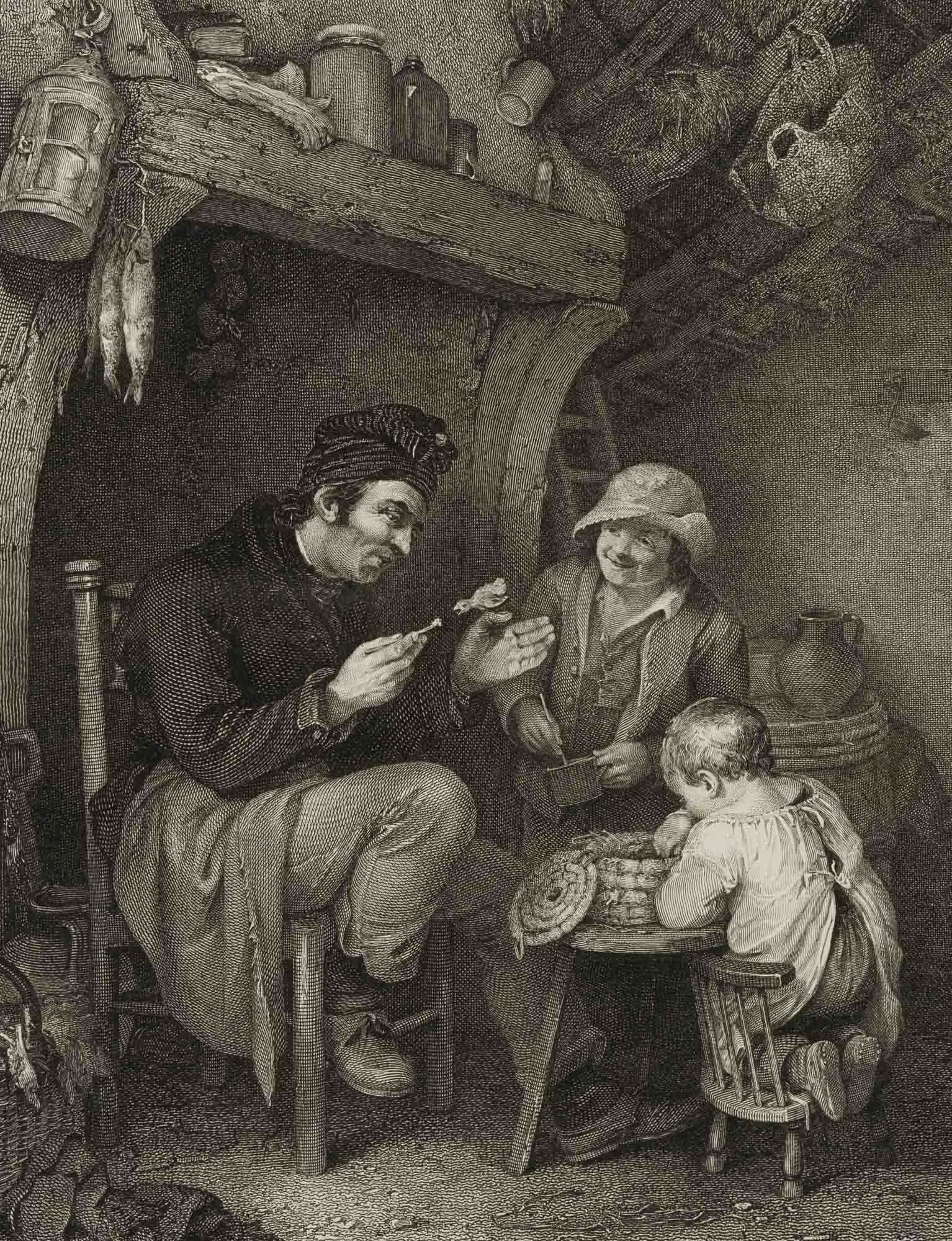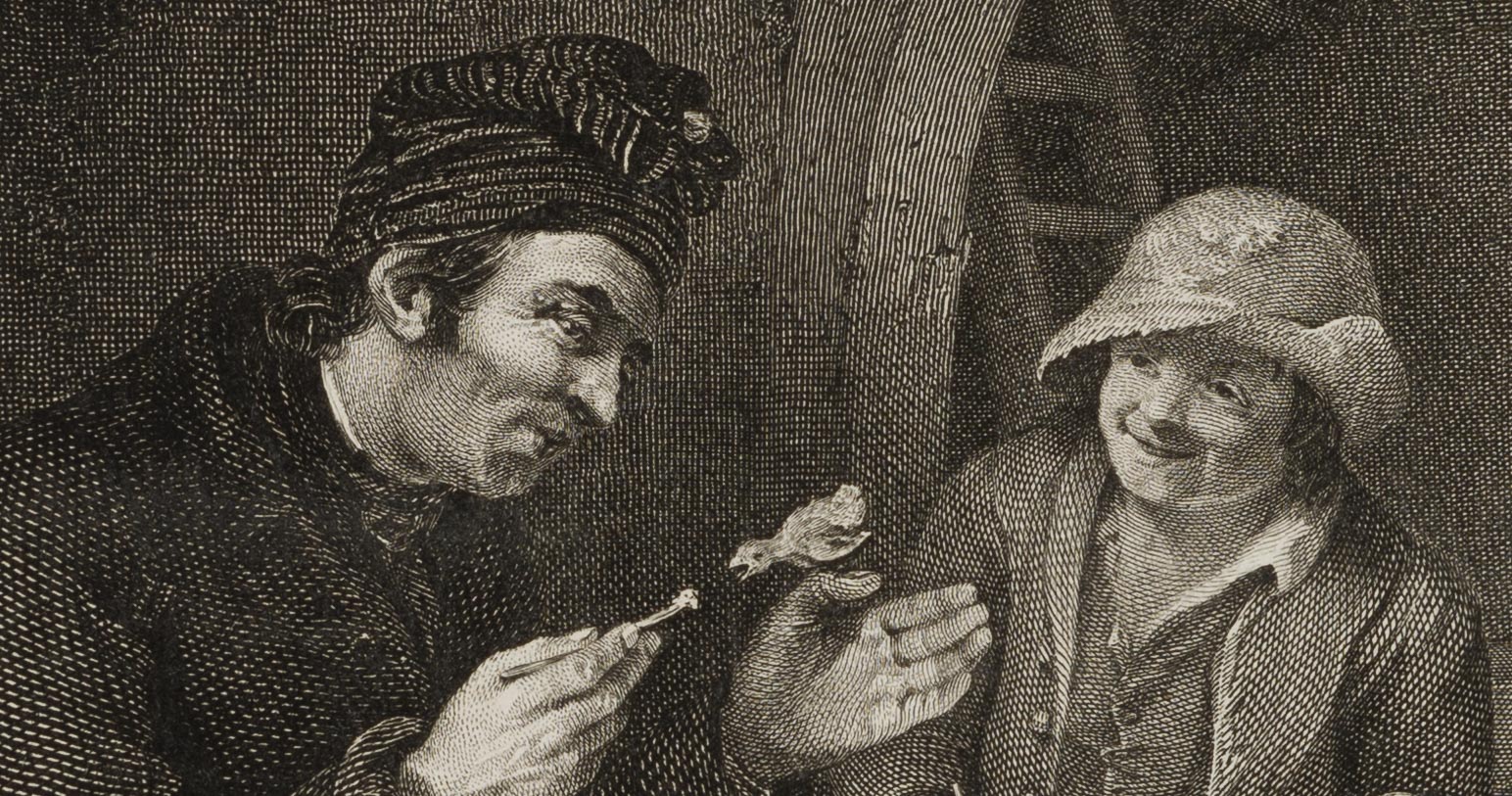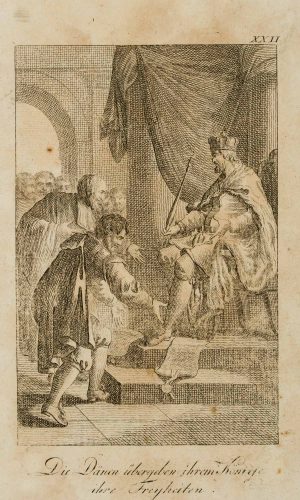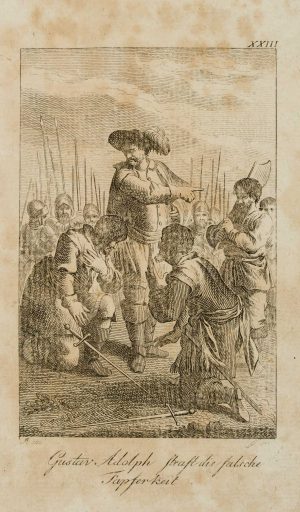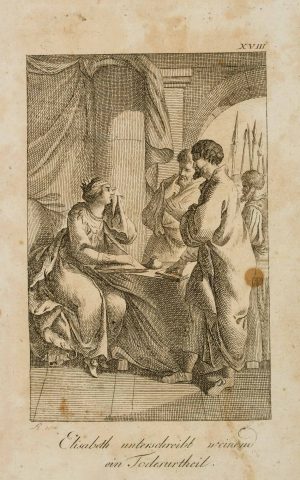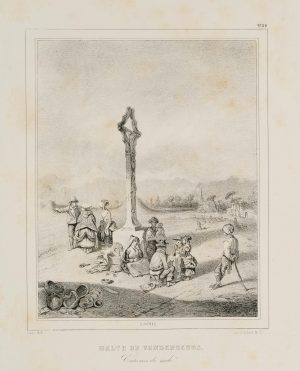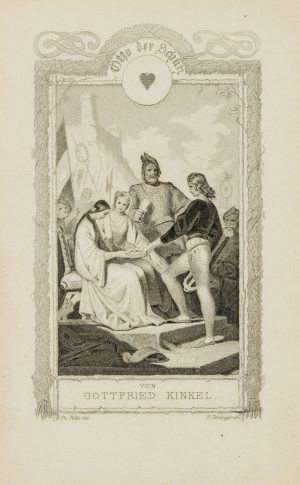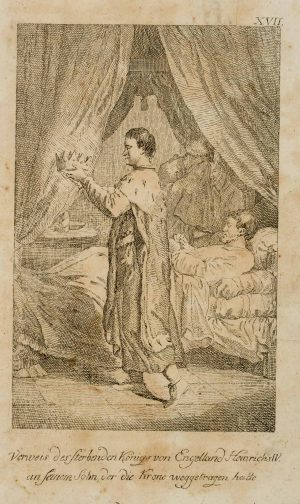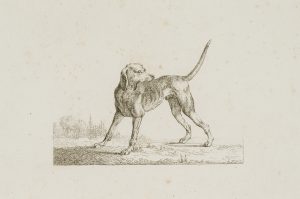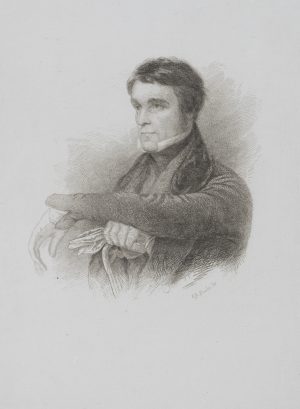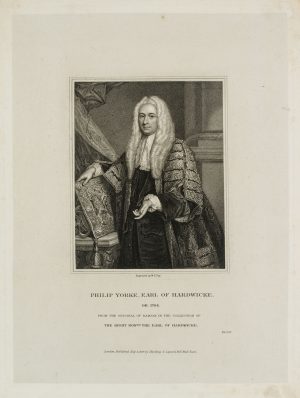John Burnet (1781 Musselburgh – 1868 Stoke Newington), The young bird, Der kleine Vogel, 1812, Kupferstich
- Technik: Kupferstich auf Papier
- Datierung: 1812
- Beschreibung: Unter der Darstellung bezeichnet und datiert “Painted & Engraved By Iohn Burnet in 1812.” Darunter mittig betitelt und mit Publikationsangabe: “London published 1st. May 1812 by J.Burnet and Boydell&Co. 90 Cheapside”.Der schottische Maler und Kupferstecher John Burnet ging 1805 nach London, wo er sich durch die Wiedergabe der Werke des schottischen Malers David Wilkie als Kupferstecher einen Namen machte. 1833 ging er nach Paris, um sich durch das Studium der Meisterwerke im Louvre weiter zu bilden.
- Schlagworte: Tiere, Genre, Großbritannien, Vogel, Realismus, 1800-1849
- Größe: 41,0 cm x 33,0 cm, Darstellung: 25,0 cm x 19,7 cm
- Zustand: Guter Zustand. Das Papier ist altersbedingt verfärbt. Das Blatt ist blass stockfleckig. Die Darstellung ist frisch erhalten und macht einen tadellosen Eindruck. Die Blattecken sind leicht gewellt und fleckig, verso mit Spuren einer früheren Montierung.
English Version:
John Burnet (1781 Musselburgh – 1868 Stoke Newington), The young bird, The little bird, 1812, Copper engraving
- Technique: Copper engraving on Paper
- Date: 1812
- Description: Inscribed and dated “Painted & Engraved By Iohn Burnet in 1812” below the image. Titled in the centre below and with publication reference: “London published 1st. May 1812 by J.Burnet and Boydell&Co. 90 Cheapside”.The Scottish painter and engraver John Burnet went to London in 1805, where he made his name as an engraver by reproducing the works of the Scottish painter David Wilkie. In 1833 he went to Paris to further his education by studying the masterpieces in the Louvre.
- Keywords: 19th century, Realism, Animals, United Kingdom, bird
- Size: 41,0 cm x 33,0 cm (16,1 x 13 in), Depiction: 25,0 cm x 19,7 cm (9,8 x 7,8 in)
- Condition: Good condition. The paper is discoloured due to its age. The sheet is pale foxed. The image is freshly preserved and makes a perfect impression. The corners of the sheet are slightly wavy and stained, with traces of an earlier mounting on the verso.

